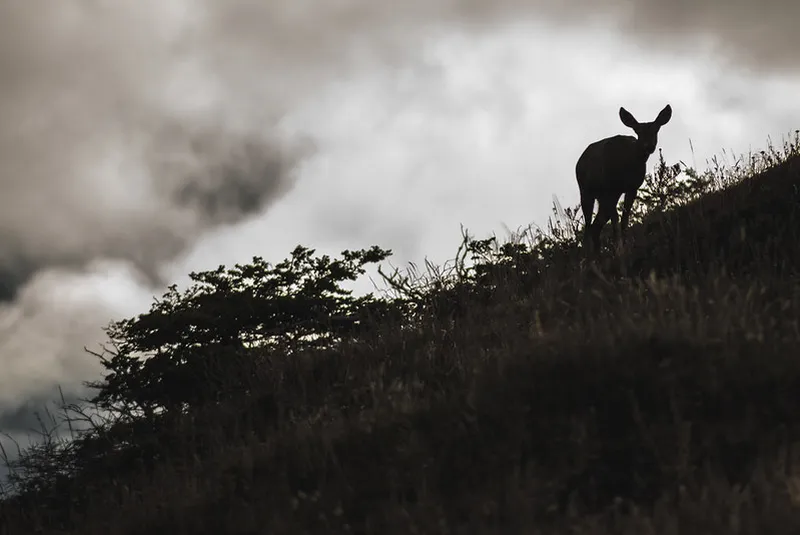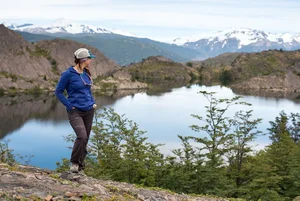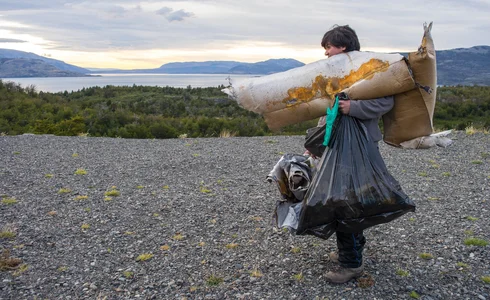Hikers involved in the ‘green’ movement have earned themselves the unfortunate reputation over the years of being - how shall we put this? - less than meticulous in the hygiene department! This unfortunate image is a hangover from the early days of the eco-friendly movement, when the only alternative to using chemical-heavy soaps was to use none at all. Thankfully, this is no longer the case, and a wide variety of biodegradable soaps, shampoos, toothpastes and many other personal care products is now readily available.
So here’s our quick guide to why and how to use biodegradable soap on your Patagonia hike!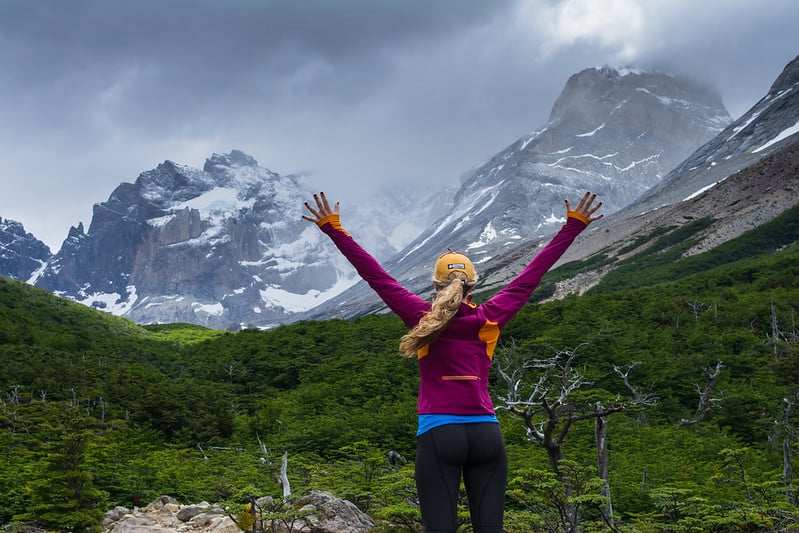
Why Use Biodegradable Soap?
When you’re heading out to hike in Patagonia, whether in Chile or Argentina, you’ll be perfectly placed to experience some of the most pristine landscapes on Earth at one of the final wild frontiers. So if you’re planning to camp out in the wilderness during a multi-day trek you’ll need to take extra precautions to ensure that you make as small an impact as possible on the delicate plants and animals around you. This means ensuring that you don’t pollute water sources like lakes and rivers or poison the soil by using regular soap to wash yourself, your clothes or your pots and pans. Even if you’re staying in established camps or eco-friendly lodging such as EcoCamp Patagonia in Chile’s Torres del Paine National Park, it’s important to remember that any waste water has to be processed before it can be returned to the land and biodegradable hygiene products require less processing than ordinary products. Quite aside from the environmental considerations, biodegradable products are often much better for human health too!
What is Biodegradable Soap?
Biodegradable literally means that the ingredients used in the soap can be broken down naturally by bacteria, rather than remaining in the soil. A soap is generally considered to be biodegradable as long as at least 90% of it breaks down into water, carbon dioxide and biological material within six months of being discarded. Many non-biodegradable soaps, on the other hand, contain chemicals like triclosan and triclocarban, which are almost impossible to break down naturally and are also impossible to filter out during water treatment. The result is that lakes and rivers become polluted with these chemicals which upset the natural balance of the water. Phosphates are another group of chemicals that are frequently found in regular soaps and that cannot be broken down or processed out of waste water. When phosphates find their way into lakes they can cause an overgrowth of algae, known as an algal bloom, which can use up all of the oxygen in the water causing the other animals and plants to die in large numbers.
What to Look for in Biodegradable Soap
The main complaint when it comes to biodegradable personal care products is that they’re not as effective as ordinary products. However, as with any product, the key is to check the ingredients carefully to ensure that it contains everything it needs to get the job done. Naturally occurring ingredients such as sodium lauryl sulfate and lauryl alcohol are both effective and biodegradable. And remember that any soaps with ingredients like triclosan or phosphates are not biodegradable even if they claim to be. Products that advertise themselves as anti-bacterial are especially likely to include these, so double check the ingredients.
How to Use Biodegradable Soap
Even if you have the best of intentions and make sure to buy entirely biodegradable hygiene products, you may be doing more harm than good if you assume that you can just toss your waste water away into a stream. Biodegradable soap (and shampoos and dish soap) will degrade within about six months if you bury it in the ground at least 60 metres (200 ft) from a water source, but it will still be harmful if you dispose of it directly into a natural lake or river. Digging a hole to bury the waste water ensures that it won’t be lapped up by some unsuspecting guanaco and puts the soap in direct contact with bacteria in the soil that will break it down.
Other Biodegradable Products
It doesn’t just stop at soap! Any chemical products you use whilst hiking in Patagonia should be biodegradable to mitigate your footprint on the land. Here are a few suggestions.
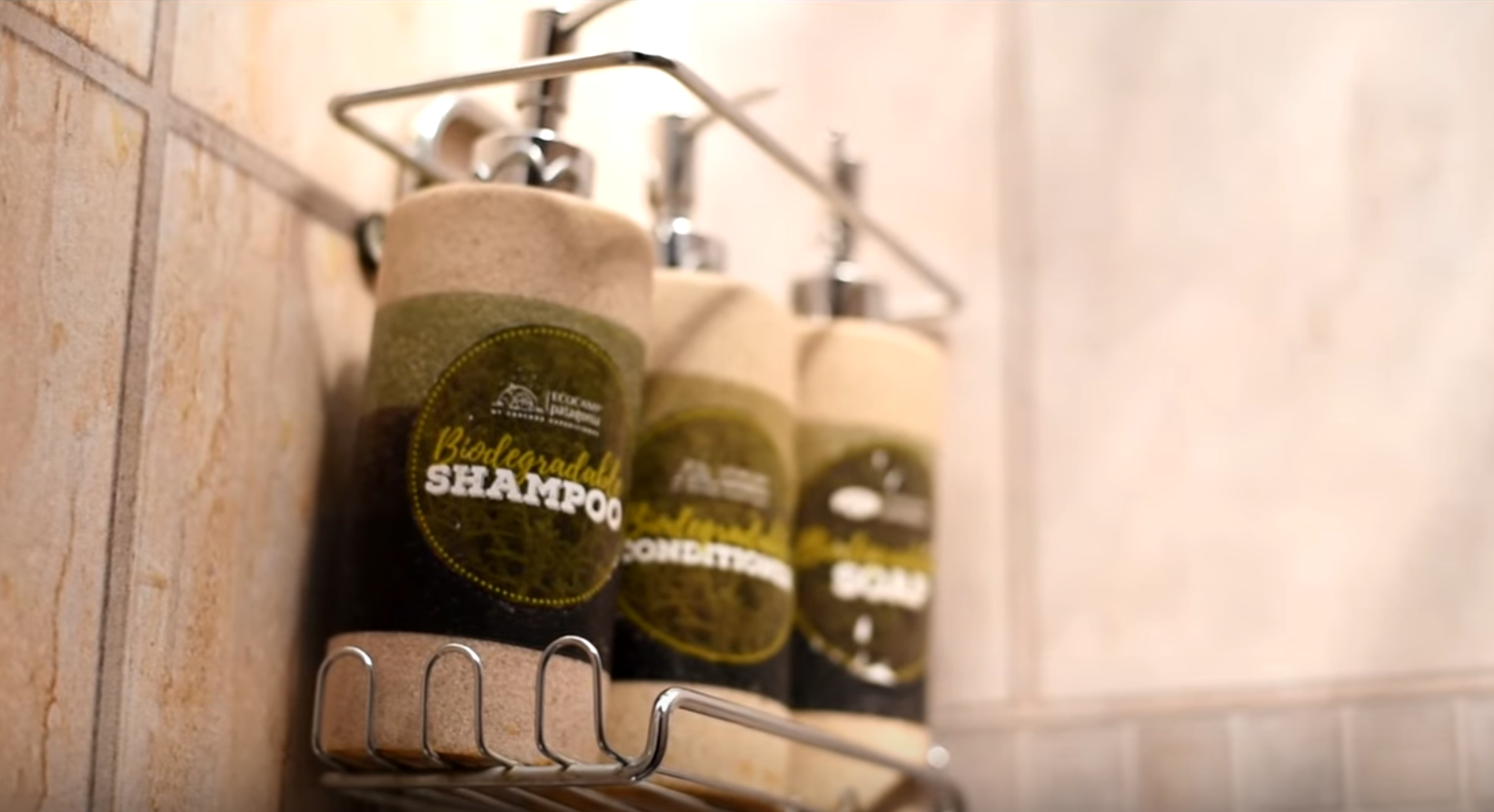
Biodegradable Dish Soap
If you’re planning to camp out in Patagonia, even at an official campsite, it’s best to use biodegradable dish soap. Products like Campsuds and Packsoap are stocked by many camping and outdoors shops, or you can find them online.
Biodegradable Shampoo & Conditioner
Remember that just because the shampoo is biodegradable it doesn’t mean you can wash your hair directly in the rivers or lakes (and you’d have to be pretty brave to attempt it in glacial Patagonia anyway!). Live Clean, Kiss My Face and Avalon Organics are just a few out of many companies producing biodegradable hair care products.
Biodegradable Sunscreen
You might not think that a biodegradable sunscreen is important, after all, you apply it to your skin, not to the ground. But bear in mind that anything you put on yourself will get washed off into the waste water when you shower. Try UV Natural, Solbar Shield or Mexitan biodegradable sunscreens.
Biodegradable Insect Repellent
Many people choose to buy a biodegradable, natural insect repellant rather than cover themselves in strong chemicals. Skedattle is a good place to start.
Biodegradable Toothpaste
If you don’t want the chemicals in your care products leaching into lakes and rivers, it probably goes without saying that you’re better off not putting them in your mouth! Tom’s of Maine and A. Vogel provide biodegradable alternatives.
Worried about sourcing all of these products? If you’re savvy enough to book your stay at EcoCamp Patagonia, complementary eco-friendly soaps and hair-care products are provided!

